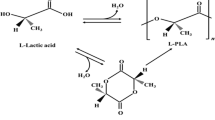Abstract
Polypropylene (PP) is the most widely used polyolefin, due to its high mechanical strength and better processability in comparison to the others in its group. Conventional methods of polymerisation result in high molecular weights of PP. However, high molecular weights are not required for several applications. To overcome this problem controlled reduction in molecular weight of PP in presence of free radicals, in solution, is proposed. Four commonly available free radical generators viz: benzoyl peroxide (BPO), azo- iso-bis butyronitrile (AIBN), t-butyl hydroperoxide (TBHP) and dicumyl peroxide (DCP) were used to bring about reduction in molecular weight of PP. Effect of the free radical generator concentration, reaction time, reaction temperature and reaction medium (toluene, xylene and decalin) on the extent of molecular weight reduction was studied. The effect of this molecular weight reduction on mechanical, thermal, rheological and crystalline properties of the polymer was also studied. With proper selection of initiator and reaction conditions, it was possible to obtain low molecular weight branched PP with improved mechanical and thermal properties.
Similar content being viewed by others
References
G. Madras, J. M. Smith, and B. J. McCoy, Polym. Degrad. Stab. 52, 349 (1996).
S. Kumar, R. Kumar, and G. Madras, J. Appl. Polym. Sci. 84, 681 (2002).
L. Guy and B. Fixari, Polymer 40, 2845 (1999).
E. Niki, T. Shimo, T. Ido, and Y. Kamiya, J. Appl. Polym. Sci. 19, 2341 (1975).
Z. Osawa, T. Saito, and Y. Kumira, J. Appl. Polym. Sci. 22, 563 (1978).
T. G. Degtyarova, N. F. Tromova, and V. V. Kharitonov, Polym. Sci. USSR 20, 2105 (1979).
V. Desai, M. Shenoy, and P. Gogate, Chem. Eng. J. (Lausanne) 140, 483 (2008).
V. Desai, M. Shenoy, and P. Gogate, Chem. Eng. Process. 47, 1451 (2008).
O. Solomo and Z. Z. Ciuta, J. Appl. Polym. Sci. 6, 683 (1962).
V. R. Gowarikar, N. V. Viswanathan, and J. Sreedhar, Polymer Science (New Age International, New Delhi, 2001).
J. Brandrup, E. H. Immergut, and E. A. Grulke, Polymer Handbook (Wiley, New York, 1999).
N. Fazeli, H. Arabi, and Sh. Bolandi, Polym. Test. 25, 28 (2006).
A. J. De Nicola, A. F. Galombos, and M. D. Wolcowicz, Polym. Mater. Sci. Eng. 67, 106 (1992).
X. Wang, C. Tzoganakis, and G. L. Rempel, J. Appl. Polym. Sci. 61, 1395 (1996).
D. Yan, W. J. Wang, and S. Zhu, Polymer 40, 1737 (1999).
Author information
Authors and Affiliations
Corresponding author
Additional information
The article is published in the original.
Rights and permissions
About this article
Cite this article
Shenoy, M.A., Patil, M. Studies in reduction of molecular weight of polypropylene. Polym. Sci. Ser. B 52, 174–183 (2010). https://doi.org/10.1134/S1560090410030073
Received:
Accepted:
Published:
Issue Date:
DOI: https://doi.org/10.1134/S1560090410030073




